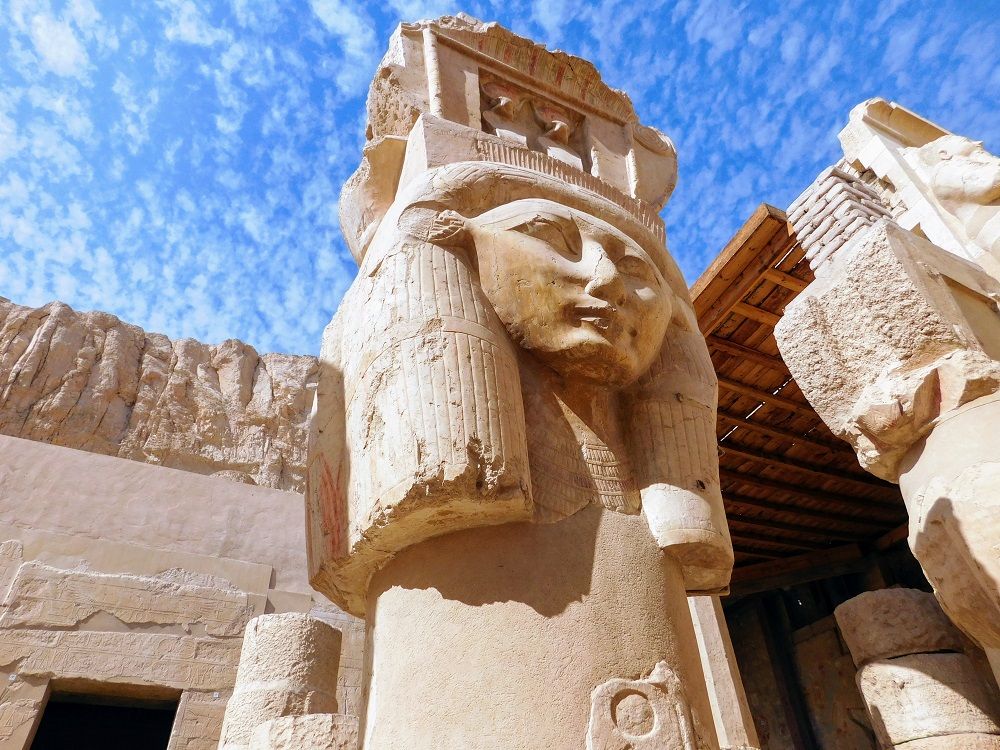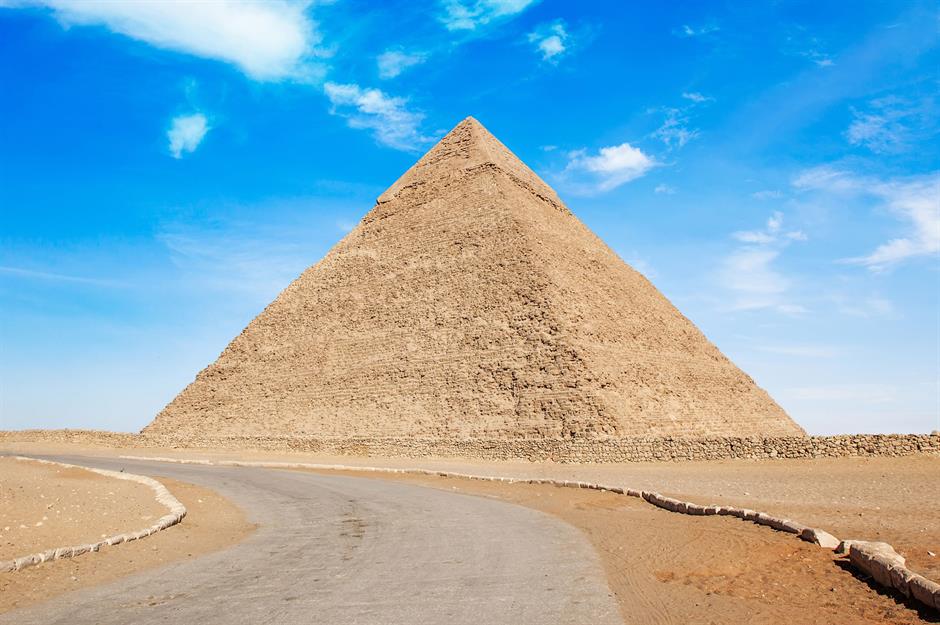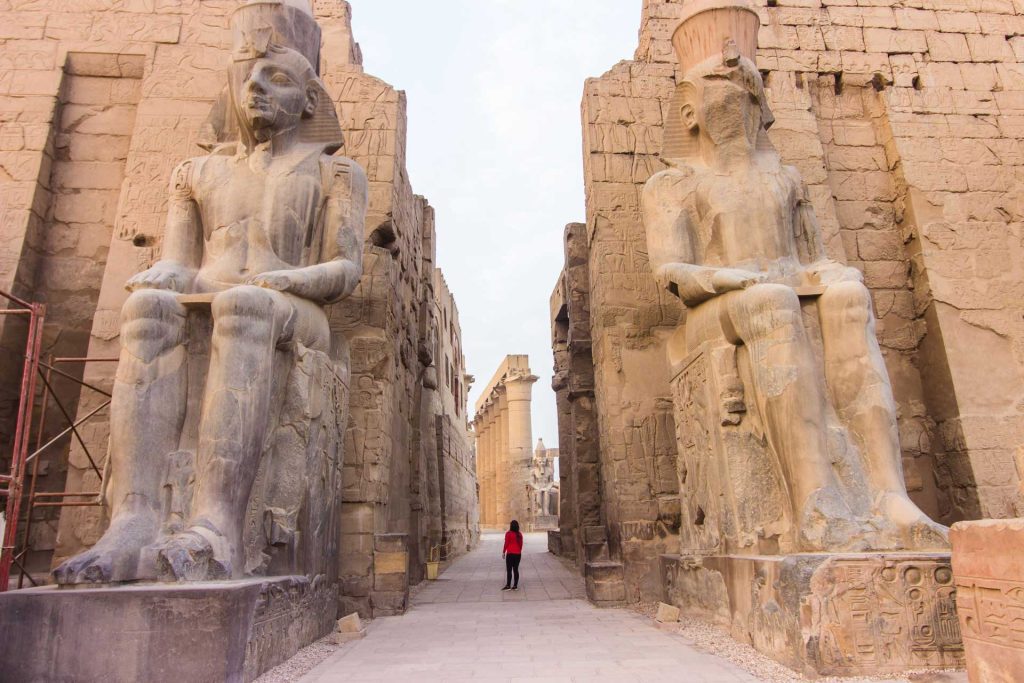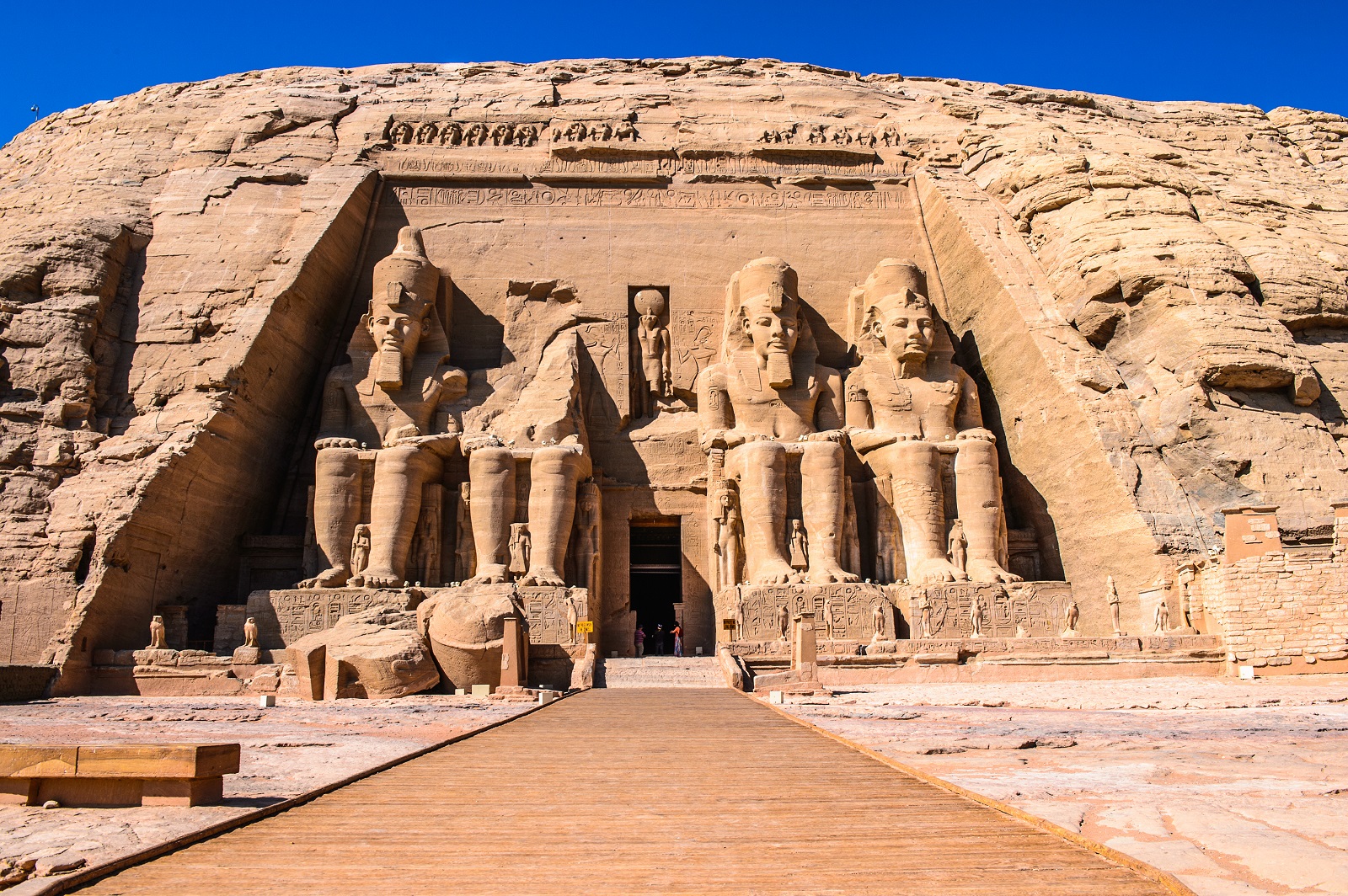Canadian Escapade: Unraveling the Charms of Egypt’s Ancient Temples and Tombs

Introduction
The Magic of Egyptian Temples
When one thinks of ancient wonders, the temples of Egypt undoubtedly come to mind, standing as timeless monuments to the greatness of a long-lost civilization. These architectural marvels resonate with a sense of grandeur that enchants visitors from around the globe. As you journey through Egypt, you’ll feel an undeniable connection to the past as you explore the intricacies of these sacred places.
Imagine standing in front of Karnak Temple, the largest religious building ever constructed, and being awestruck by its towering columns adorned with intricate hieroglyphics. Each stone tells a story, not just of kings and gods but of the people who worshipped here. As you stroll through the halls of the Temple of Luxor, you may find yourself transported back to a time when priests performed daily rituals designed to maintain harmony between humanity and the divine.
The magic of these temples lies not only in their physical presence but also in the air of mystery and reverence that envelops them. Many visitors describe the serenity they feel amid the echoes of ancient prayers and the gentle rustling of the papyrus along the Nile banks. Learning about the culture, history, and significance behind each temple can make your visit far more rewarding.
Planning a Canadian Escapade
While Egyptian temples captivate the imagination, they are not the only travel experience awaiting you. If you're eager for a distinct adventure, why not consider a Canadian escapade? Canada is a glorious tapestry of natural beauty, vibrant cities, and rich cultural experiences. Here are some tips to help you plan your journey:
- Choose Your Destination:
- Popular cities include Toronto, Vancouver, and Montreal.
- Each city offers unique sights—Toronto boasts the iconic CN Tower, while Vancouver is known for its stunning coastal views.
- Season Matters:
- Spring and autumn provide mild weather ideal for sightseeing.
- Winter offers a magical snowy landscape perfect for skiing or visiting the Winter Carnival in Quebec.
- Local Experiences:
- Don’t miss out on local festivals, such as the Calgary Stampede, which showcases the country’s Western heritage.
- Experience Indigenous culture through local art galleries and storytelling events.
- Cuisine:
- Treat your taste buds with poutine in Quebec or fresh seafood in the Maritimes.
- Don’t forget to try Canadian maple syrup; it’s a must!
By weaving together the mystique of Egyptian temples with the charm of Canada, you create a travel narrative that is not only diverse but also filled with potential for exploration and enjoyment. Both destinations promise a world of wonder, each inviting you to delve deep into their history while offering unique and unforgettable experiences. Where will your next escapade take you?

Exploring the Pyramids of Giza
History and Architecture
As you embark on your journey through the land of pharaohs, the Pyramids of Giza present a breathtaking spectacle that beckons exploration. Standing majestically on the Giza Plateau, these ancient structures are not merely tombs but extraordinary achievements of engineering and artistry. The Great Pyramid of Khufu, in particular, is the largest of the trio and a stunning testament to human ingenuity.
When pondering the history of these pyramids, consider that they were built over 4,500 years ago, serving as monumental resting places for the pharaohs. The construction of these grand edifices involved thousands of skilled labourers, with estimates suggesting that around 20,000 to 30,000 workers dedicated their lives to this monumental task. Notable features of the pyramids include:
- Precision Engineering:
- The alignment of the pyramids with the cardinal points is incredibly precise.
- Each side of the Great Pyramid measures an astonishing 755 feet, showcasing remarkable symmetry.
- Construction Techniques:
- Some theories suggest that enormous limestone blocks were quarried and transported to the site using sledges.
- Recent evidence indicates that water may have been poured on the sand to reduce friction during transport, making the task more manageable.
- Symbolism:
- The pyramids represented the pharaoh’s journey to the afterlife, embodying the belief in the eternal life of the soul.
Standing before these architectural wonders, it's easy to feel a strong connection to the past. Imagine gazing upwards at the monumental structure, and envisioning the dedication and craftsmanship that went into its creation.
Mysterious Sphinx
Adjacent to the pyramids lies another enigma of ancient Egypt: the Great Sphinx. With the body of a lion and the head of a pharaoh, it’s a captivating figure surrounded by the sands of time. The Sphinx is often shrouded in mystery, giving rise to various theories and legends regarding its origins and purpose. Some fascinating facts about the Sphinx include:
- Dimensions:
- Standing at 66 feet high and 240 feet long, it is one of the largest statues in the world.
- The size alone evokes admiration and raises questions about the capabilities of ancient artisans.
- Cultural Significance:
- The Sphinx has long been viewed as a guardian, protecting the pyramids from intruders.
- Many believe it embodies kingship and strength, linking the ruler to the divine.
- Legends and Myths:
- The Sphinx’s nose has been a topic of intrigue; it’s believed to have been broken off by a cannonball fired by Napoleonic troops.
- Its enigmatic smile has inspired countless interpretations regarding its expression and intentions.
As you gaze upon the Sphinx, you may find yourself pondering the secrets it holds—its silent watch over the landscape invites you to explore the depths of ancient knowledge. The combination of the Pyramids of Giza and the Great Sphinx creates an enthralling atmosphere where history whispers in the winds of the desert. Wouldn't you want to unravel these mysteries further?

Cruising the Nile River
Luxor and Karnak Temples
As you glide along the majestic Nile River, the smooth waters invite you to discover some of the most spectacular treasures of ancient Egypt—Luxor and the Karnak Temples. Appropriately referred to as the world's greatest open-air museum, Luxor is steeped in history and vibrant culture that intertwines with the rhythm of the river.
The Karnak Temple, one of the largest temple complexes in the world, is a must-visit. Walking through its magnificent halls, you’ll feel the weight of centuries of history pressing around you. Visitors often remark on the sheer scale of the site, punctuated by towering columns that stretch toward the sky. Here are some highlights you might not want to miss:
- Hypostyle Hall:
- This hall features 134 massive columns, some reaching up to 23 meters high. The intricate carvings depict scenes of ancient Egyptian gods and pharaohs.
- The sheer size and artistry create a breathtaking atmosphere; it's the perfect spot for photographs or simply to absorb the grandeur.
- Sacred Lake:
- Amidst the chaos of day-to-day life, the tranquil waters of the Sacred Lake provide a moment of reflection.
- This man-made lake was used by priests for purification rituals and adds to the serene beauty of the temple complex.
Cruising onward to Luxor Temple, you’ll find it beautifully lit at night, casting a magical glow that enchants all who visit. As you wander through its passageways, consider that this temple was previously a ceremonial site where kings were crowned.
Valley of the Kings
Just a short sail away lies the illustrious Valley of the Kings—a burial site that has captured the imaginations of archaeologists and historians alike. Hidden away in the desert landscape, the valley is a testament to the opulent burial practices of pharaohs. What makes the Valley of the Kings particularly special? Here are some key features you’ll appreciate:
- Royal Tombs:
- Home to the tombs of many Egyptian pharaohs, including the famous tomb of Tutankhamun, the valley is an exploration of Egypt’s royal lineage.
- Each tomb is adorned with intricate murals that depict the journey to the afterlife, rich with symbols and stories of gods and the deceased.
- Archaeological Significance:
- The site has provided invaluable insights into burial customs and the art of mummification, revealing a wealth of knowledge about ancient Egyptian society.
- Continued excavations frequently uncover new tombs, sparking excitement in the archaeological community and among visitors alike.
While wandering through the Valley of the Kings, one can't help but feel the mysterious allure that surrounds these ancient tombs. The stark desert landscape and the silence that envelops the valley seem to whisper secrets of the past, drawing you deeper into the wonders of Egyptian history.
As the Nile continues to flow, carrying with it centuries of stories and secrets, a cruise along this iconic river becomes an unforgettable journey through time, expanding your understanding of a civilisation that has fascinated the world for millennia. Where will the current take you next?
Delving into Ancient Egyptian History
Tutankhamun's Tomb
Continuing your exploration of ancient Egyptian history, one cannot overlook the remarkable discovery of Tutankhamun’s Tomb. Often referred to as the "boy king," Tutankhamun ascended to the throne at a young age and ruled for a brief period. Yet, his tomb, unearthed in 1922 by Howard Carter, has captivated hearts and minds worldwide. What makes Tutankhamun's tomb so special? Here are a few highlights that showcase its importance:
- The Discovery:
- After years of searching, Carter stumbled upon the tomb buried beneath layers of rubble, remarkably intact. The excitement of uncovering such a historical treasure sent ripples through the archaeological community.
- The intact state of the tomb meant that it provided invaluable insights into burial practices and artifacts from the 18th dynasty.
- The Riches Within:
- Inside the tomb, over 5,000 invaluable artifacts were discovered, including gold masks, ornate jewellery, and furniture designed to accompany the young pharaoh in the afterlife.
- The most famous artifact is undoubtedly the golden death mask of Tutankhamun, which has become an enduring symbol of Ancient Egypt's grandeur.
- Cultural Significance:
- Tutankhamun’s tomb not only offered a glimpse into the wealth of the pharaohs but also illustrated the practices and beliefs surrounding death and the afterlife in ancient society.
As you walk through the tomb's chambers, it’s as if time stops, allowing you to connect with the young king’s journey beyond this life. Standing before his artifacts, you may find yourself reflecting on the transient nature of life and the legacies we leave behind.
Temple of Hatshepsut
Just a short distance from the Valley of the Kings, the Temple of Hatshepsut awaits your discovery, standing as a stunning tribute to one of Egypt's few female pharaohs. Hatshepsut is often celebrated for her remarkable reign, which marked a period of prosperity and architectural innovation. Here are a few aspects that make her temple so fascinating:
- Architectural Brilliance:
- Designed by the famed architect Senenmut, the temple is a masterpiece, brilliantly blended into the cliffs of Deir el-Bahari. Its terraced layout and striking colonnades create a stunning visual effect that leaves visitors in awe.
- The intricate reliefs and carvings narrate stories of her accomplishments, including successful trading expeditions and divine lineage, portraying her as a powerful leader.
- Unique Legacy:
- Hatshepsut challenged the norms of her time by assuming the title of pharaoh, presenting herself in male attire and ruling alongside the god Amun. This remarkable transition embodies her strength and determination.
- Her reign highlights the significant roles women could hold in ancient societies, inspiring visitors to reflect on gender dynamics and leadership throughout history.
As you explore the temple's captivating halls, consider the challenges Hatshepsut faced and the profound impact she had on Egyptian history. The beauty of her temple not only reflects her accomplishments but also serves as a reminder of the complexities of leadership in an often male-dominated realm.
Delving into the treasures of Tutankhamun’s tomb and the grandeur of Hatshepsut's temple elevates your understanding of ancient Egyptian history beyond mere facts; it allows you to appreciate the stories of individuals who shaped a remarkable civilization. As you navigate this rich history, contemplate how these figures resonate throughout time, leaving their indelible mark on humanity. What legacy do you want to create?

Experiencing Local Culture and Cuisine
Traditional Egyptian Dishes
As you immerse yourself in the wonders of ancient Egypt, don't forget to savour the rich tapestry of local culture and cuisine that is equally captivating. Egyptian food is a delightful fusion of flavours, aromas, and ingredients, reflecting the country's vibrant history and diverse influences.
When you wander through local markets or dine in traditional restaurants, you'll likely encounter some iconic dishes that embody the heart of Egyptian culinary heritage. Here are a few must-try items:
- Koshari:
- This beloved street food is a filling blend of rice, lentils, and pasta topped with a zesty tomato sauce, caramelised onions, and a sprinkle of chickpeas. It’s comfort food at its finest!
- You’ll find it served in restaurants and food stalls, making it a convenient meal for on-the-go travellers.
- Ful Medames:
- A staple breakfast dish, created with slow-cooked fava beans, seasoned with olive oil, garlic, and lemon juice. Often served with bread, it is both nutritious and delicious.
- Pair it with some ta'ameya (Egyptian falafel) for an energizing start to your day.
- Molokhia:
- This unique green soup, made from jute leaves, has a distinct mucilaginous texture and is typically served with rice or bread alongside chicken or rabbit, delighting adventurous palates.
- Baklava:
- For dessert, do indulge in this sweet treat made of layers of filo pastry filled with nuts and drenched in honey syrup. It’s rich and delightful, promising to satisfy your sweet tooth after a hearty meal.
Engaging with local cuisine offers a deeper understanding of Egyptian culture, allowing you to connect with the community through food. As you enjoy your meals, share stories with fellow diners and perhaps even learn a recipe or two!
Folk Music and Dance Performances
After an enriching culinary experience, why not dive into the enchanting world of traditional Egyptian music and dance? Folk performances are an integral part of Egyptian culture, infusing colour and rhythm into everyday life. When attending a local performance, you’ll be captivated by the following:
- Traditional Instruments:
- Look out for the oud, a string instrument that delivers haunting melodies, and the darabuka, a goblet drum that provides vibrant beats. The skill and passion of the musicians truly enhance the atmosphere.
- Cairo Opera House:
- Known for hosting many artistic events, consider catching a traditional dance performance here. The blend of dramatic storytelling and graceful movements can leave you spellbound.
- Belly Dance:
- Arguably the most famous of Egyptian dance forms, belly dancing showcases the fluidity and intricacy of movement. Performers often wear dazzling costumes that sparkle under the lights, bringing the energy of the audience to life.
- Community Celebrations:
- If you find yourself in Egypt during a local festival or public holiday, participate in the lively traditional revelries, where folk music and dance take centre stage, creating an ambiance of joy and unity.
Experiencing local culture through food, music, and dance offers invaluable insights into the soul of Egypt. You’ll find that each flavour tells a story and every melody carries emotion, enriching your journey as you create lasting memories. So, as you explore this wonderful land, be sure to open your heart (and palate!) to the beauty of Egyptian culture—there’s so much to discover!
